[Previous chapters: Introduction, 1 – Prehistory, 2 – Marvelman Rises, 3 – Marvelman Falls, 4 – Intermission: 1963 to 1982, 5 – Prologue to Warrior, 6 – A Warrior is Born]

Once Alan Davis took over from Leach, however, this arrangement began to cause problems. Although his earlier work on Marvelman was done, not as work-for-hire, but at the usual Warrior rates, Davis was, understandably enough, unhappy to continue to be working on that basis on a magazine where everyone had rights to the properties they were working on except him, so Skinn suggested a compromise situation. If everyone who already owned rights to Marvelman gave Davis 10% each, then he would have 30% of the rights, as would Moore and Leach, leaving Quality with the remaining 10%.
There are other, incorrect, versions of how the percentage share on Marvelman was worked out, sometimes told by the same person at different times. I have also seen the initial share as one-third each for Moore, Leach, and Quality Communications, leading to a quarter each for Moore, Leach, Alan Davis, and Quality later on. Or a version where originally Moore, Leach, and Quality had a third each, Moore and Leach gave Davis 5% each, and Quality handed over 18.3%, leaving Moore, Leach and Davis with 28.3% each, and Quality with 15%. But, as this document shows, it was 40% each for Moore and Leach, and 20% for Dez Skinn in his own name, as of the 3rd of March 1982.

LETTER OF AGREEMENT BETWEEN THE PARTIES HEREIN UNDERSIGNED ON THE 3RD DAY OF MARCH NINETEEN HUNDRED AND EIGHTY TWO
In connection with the characters appearing in WARRIOR Magazine known as Marvelman, YOUNG Marvelman, KID Marvelman, GARGUNZA and the Marvelman FAMILY and any other related concepts initially established during the 1950s and 1960s by the publishers L. Miller & Son Limited.
It is hereby agreed that prior to any development work done on the characters mentioned above and concepts involved, the available copyright on such is divided in the proportions detailed.
This copyright agreement relates only to the basic concepts as they existed initially, before WARRIOR issue one was published and entitles the undersigned to their proportionate percentage of any licensing or merchandising ventures.
This copyright does not entitle the undersigned to any royalty fees for work which appears in WARRIOR or any other Quality Communications publication.
Alan Moore 40% ~~~~ Garry Leach 40% ~~~~ Dez Skinn 20%



There were also problems brewing at Warrior. In the beginning, Moore had been very happy with the set-up there. In an interview with Eddie Stachelski in Fantasy Express #5 in January 1983, he says,
Working for Quality Comics is great! It’s cartoon heaven. The basic deal is that all of us creators work for about half of the going rate up front, but hopefully more than make up for that by way of the many side benefits we receive. For instance, once Warrior has passed the sales breakeven point the profits are split down the middle between Quality Communications and the creative people involved. So if it sells well, we stand to make about as much again as the sum we’ve already been paid as a flat rate. Maybe more. On top of that, we get a very healthy whack of the copyright in so far as it relates to reprint rights and merchandising deals. I’ll give you an example to show you what I mean.
Me and Dave Lloyd own V for Vendetta between us. It’s our character and in the unlikely event of us parting company with Quality Communications, V goes with us. We get paid the basic flat rate for it, and a few months later we hopefully receive our bonus, depending upon sales. When we’ve done about ten or twelve episodes we’ve got enough material to fill an album… A number of album publishers have already expressed an interest in syndicating some of the stuff in Warrior, so say they bring out a Vendetta album in France or Spain or whatever, me and Dave get about 60 or 70% of the royalty money and the rest goes to Quality Communications for setting up the deal in the first place. If V becomes really popular and they decide to make a film out of the character, then the same thing applies. Likewise posters, badges, T-shirts and stuff like that. If Palitoy decide to market a V for Vendetta Junior Home Terrorist outfit then it’s me and Dave who stand to reap the lion’s share. This is great. This is how it should be. The end result is that the creators are spurred on to do the best stuff possible because it’s them that stand to gain from its success.
I know that DC and Marvel in the States are starting to make some inroads into this sort of area, but it’s going to be a long time before they can approach the sort of deal we’ve got at Warrior. It’s the sort of deal that could only be instigated by a small independent company. Big corporations don’t really have a chance of matching it, if only because of the restrictions inherent in their corporate structure.
Quite apart from all this, the major benefit of working for Warrior is that we’re all allowed to do more or less what the hell we like. Dez knows we’re all competent professionals and tends to trust in our judgement on aesthetic matters. From the response we’ve had I don’t think we’ve let him down so far. If anything I think Warrior has benefited immensely from the diversity and outlandishness of much of its content. It sets us apart and makes us different. It enables us to make artistic progressions of a sort that the major companies are too nervous to even contemplate. And on top of that we’re all great buddies, we enjoy working together, we enjoy getting drunk together, and by and large it’s a shit hot way to round out one’s third decade upon the planet Earth.
Later on, however, Moore would have less flattering things to say about Quality Communications, and about Dez Skinn. At the beginning of their relationship, Skinn had been the superstar comics editor, fresh from his revamp of Marvel UK, and had been a major player in the UK comics scene for quite a number of years. Alan Moore, on the other hand, had only appeared on the scene with his short stories in Doctor Who Weekly and 2000 AD in 1980, two years prior to Warrior, and hadn’t as yet produced any major piece of work, so wasn’t at all well-known at the time. This was all to change, however, as Moore became the rising star of British comics, particularly for his work in Warrior, and what was to have been Skinn’s big project began to be seen as Moore’s own personal showcase. Inevitably, I suppose, tensions arose between them. In March 1982 Moore and Skinn were a year on either side of thirty years old. Both of them were ambitious, driven, and passionate about their work. They were also both stubborn young men who could not possibly have imagined that their youthful hotheadedness from half a lifetime ago would still be being aired thirty years after the event. What is obvious is that the two of them clashed, and that this was having a detrimental effect on Moore’s work for Warrior.

When Skinn had originally published Warrior, he had been very careful to distance Marvelman from the already existing Marvel Comics, not wanting to run afoul of their proprietorial interest in all comics with the word Marvel in them. However, by the time he got around to publishing Marvelman Special #1 in 1984, he had decided that he was safe from any interference from that quarter. After all, he had been publishing Marvelman in Warrior for over two years at that point, and there was also the fact that Marvelman himself predated the existence of Marvel Comics by a good seven years. Not only that, but both Warrior the magazine and Marvelman the strip had been mentioned and recommended a few times in various Marvel UK publications, both in letters’ pages and by the editorial staff. From issue #2 Warrior had, just to be safe, run a line of text along the side of the first page of every Marvelman strip that said,
Marvelman is based on, and a continuation of, the 1954 L Miller and Son Ltd copyright character and is in no way associated with Marvel Comics Ltd.
As well as this notice there was also a copyright declaration attached to each strip, originally reading © Alan Moore / Garry Leach / Quality Communications, 1982, and changing as it went along, to incorporate the changes in creative personnel, and the attendant changes in the shareholdings. Also, from issue #3, both the name Marvelman and a small image of the character were regularly featured on the cover in a sidebar column, and the actual cover itself was given over to illustrations of Marvelman on a few occasions. It seemed, by 1984, as if Marvel UK weren’t concerned about Marvelman after all, but it would turn out that this supposition could not have been more wrong. But before that, there were even more problems in store for Warrior.


Alan Moore once remarked that ‘the comic industry awards are all voted for by thirty people in anoraks with dreadful social lives’, and this may not have been too wide of the mark, with the Eagles being voted on by between 500 and 600 people in 1983. Whereas British comics fandom was wild about Warrior, Marvelman, and Alan Moore, this didn’t necessarily mean that anyone outside a very small group of British comics fans had any idea who or what they were. Even copies that did make it to newsagents’ shops didn’t necessarily sell and, as these were being offered to them on a sale-or-return basis, large quantities of the magazine were returned to Quality Communications unsold. Skinn found that, almost from the beginning, he had to subsidise the magazine from the profits of his comic shop – Quality Comics in New Cross, near Greenwich in London – in the hope that sales would pick up.
As well as this, creative and other problems were starting to appear. The antipathy between Alan Moore and Dez Skinn was escalating. Skinn had wanted Moore to incorporate the Big Ben character into the Marvelman story, and Moore had responded by turning him into a sort of sub-human, a failed reject from the same technology that had produced Marvelman. It all finally reached a head over suggested revisions to one of Moore’s scripts, brought about by the age-old conflict between commerce and art. In a telephone interview with Moore about Marvelman he told me:
The problems arose, I remember… It was something really stupid. It was probably one of the later ones, and I’d got a scene, probably taking place mostly inside the mind of Johnny Bates, where I had – there was somebody had called him a queer, a virgin, I think it was probably his adult evil self – he called him a queer, a virgin, and there was some other vaguely controversial, or apparently controversial piece of dialogue, and I remember Dez Skinn phoning me up and saying that he didn’t like these things and he wanted them changed. And I said that I didn’t want them changed because I thought that they were natural, they were a part of the characterisation, and also I didn’t see what the purpose of that was. Warrior was aimed at a fairly intelligent readership, we hadn’t had any complaints, and I tended to think that this was a hangover from Dez Skinn’s days at Marvel, and he mentioned lots of things – why offend even one reader? – to which I responded, because the alternative is to gear your entire product to the most squeamish and prudish member of the audience. I said that I’m not happy going along with that.
Eventually, the argument got down to, well, if I’d just change one of them, and it didn’t matter which one it was. At which point I said, so, basically, they’re all alright to go in, but you want me to change one of them? And Dez Skinn had said, yes, and that it was a matter of him not losing face, at which point I said, no, that’s an even more ridiculous reason for changing what – I mean, I take all of my stories quite seriously. I put things in them for a reason. And because Dez had manufactured this situation unnecessarily, where he was asking me to make changes, and then had said, well, if I could just change one, so that he didn’t lose face, at this point I said no, I was not prepared to change any of them. And that was how it went down.
Probably the breaking point came in a meeting in the New Cross offices. We were arguing over some other issue, at which point I had reminded Dez that he had rung me up about a week or two before and had asked me to change a piece of the story, it didn’t matter which part, simply because he didn’t want to lose face. At which point he said, ‘That never happened, Alan.’ This was calling me a liar about something we both knew was true in front of, I suppose, Garry Leach and Steve Moore. At this point I was halfway across the office, and Steve Moore and Garry Leach were saying, ‘Leave him, Alan, he’s not worth it,’ and at that point I ceased my work for Warrior. It was just that I couldn’t have somebody lying about me and my honesty.
The three instances were all from Warrior #7, and involved Kid Marvelman calling his alter ego Johnny Bates a ‘snotty little virgin’, a hospitalised terrorist calling Evelyn Cream ‘chocolate’, and Liz Moran telling Mike Moran ‘I’ve missed my last two periods’.


I asked Dez Skinn about this, as well, and he said,
I never fell out with him, I can’t speak for Alan. I think things got tarnished when I suggested we edit out such words as ‘chocolate’ (about Evelyn Cream), ‘virgin’ (in the context of a 12-year old boy) and ‘period’ (about Liz missing hers) – all from the same Marvelman script (#7, I’ve just checked specifics). We’d lost WH Smiths only a few weeks earlier because somebody’s mum had complained about the ‘adult nature’ of the Zirk strip in #3. This was a few months after #3 went on sale, about when I was checking fresh scripts for #7 (we had to work two extra months ahead, printing in Finland). I couldn’t afford a trade backlash against us, I’d no outside financier and wasn’t born with a silver spoon in my mouth, and my shop funded the magazine.
But I didn’t want to go ahead and change things without consulting creators. That wasn’t the way we did things, we weren’t IPC, DC Thomson or Marvel UK. The whole approach was one of discussion, over everything. Hence the idea of me wanting changes reared its head at our next monthly meeting. But before I could raise my concern about how it would affect the magazine’s viability – thus everybody’s income – if there were any more complaints, Alan suddenly announced, ‘I don’t believe in editors!’
This was a huge shock and I guess a potential stand-off. We’d always been very close in the past with him phoning me at great length at all hours (often getting me out of bed – I wasn’t a family man so I wasn’t an early riser!) I felt like replying, ‘So go find a magazine that doesn’t have an editor or do your own!’ but amazingly chose to be discreet and said nothing. I guess I lost a lot of credibility with everybody there by backing down. But it was a very difficult position Alan put me in.
Anyway, my non-assertive silence obviously paid off, Alan kept on contributing scripts right up to the final issue, so even if I did lose face, there were more important things… like proving to the world a new approach (first rights, returning artwork, etc) could be seen to be working. So things continued relatively smoothly. Either way, he still carried on contributing to the magazine. Which to my mind is what it’s all about, professionalism and the end product. Personalities can get in the way with anything creative (one writer told me it was ‘unfair’ that Alan Moore was getting the lion’s share of the magazine, obviously oblivious to quality being the determining factor). But as long as the magazine comes out, that’s the main thing. Everything else is tittle-tattle which we should strive to rise above.
Obviously the altercation with Dez Skinn happened quite a bit later than Alan Moore remembered. None the less, things were starting to unravel at Warrior, and worse was to come.
To Be Continued…


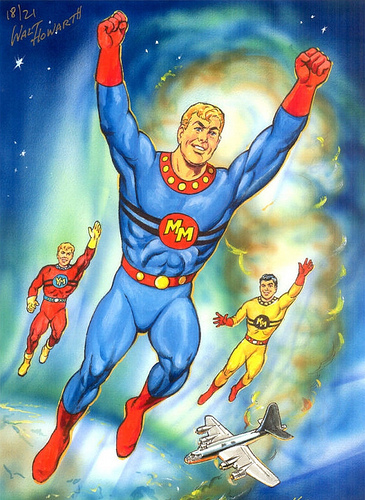


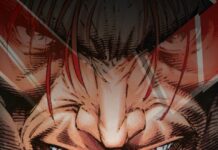
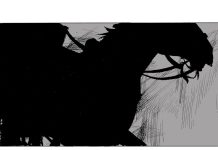
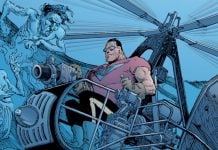
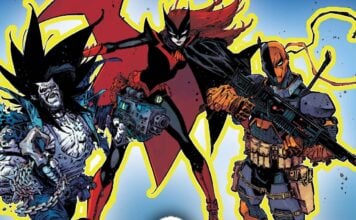




Just a quick correction: “they had created DR and Quinch for 2000 AD, which first appeared in issue #317 on the 21st of May, 1983”. 2000AD Prog 317 is cover-dated 21 May 1983 but would have been published a week or so earlier.
Two things here: First, I can only go by cover dates, as otherwise we’ve nothing to anchor ourselves to, and that way lies madness. The other thing is, I thought in the UK comics came out on the date on the cover, as they’re weekly, as opposed to the much more chronally adrift dating of US monthly comics. It’s what I seem to remember, anyway.
It’s certainly one of the things that makes it difficult to pin down exactly when some events happened in relation to one another, if you’re trying to compare an event that happened on a particular date with a publication bearing that date as its publication date. And it’s all further complicated by the fact that, whereas a comic might have a date on it, that date doesn’t necessarily bear any sort of relationship to when the work in it was actually created, or when it was conceived. It’s a problem I’ve come up against a few times, with regard to writing about MM, when things happened very close to one another, and I’ve been trying to get them in the exact right order.
Meanwhile, I’m asking the hive-mind of Facebook about UK weekly comics dates, to see if I can get an exact fix. A few of my FB friends worked on UK weekly comics, and a few of them on 2000 AD itself, so should be able to solve this one definitively.
Most British weekly comics had off-sale dates and were typically published a week in advance of what it said in the cover. I believe that 2000AD has actually printed the actual sale date on its cover since it was taken over by Rebellion but back in Moore’s day it followed standard publishing convention. I actually find it easier to cope with than American comic cover dating where sometimes it feels like the issues are coming out 3 or 4 months in advance! (DC tried to fix their dating in late 1988 but it’s still common to see e.g. The Sandman being cited as a 1989 debut when the first issue actually appeared in late 1988.)
If I’d written this I’d’ve phrased it “they had created DR and Quinch for 2000 AD, which first appeared in issue #317, dated 21st of May, 1983” – that seems to square the circle of the date being both a matter of record and a convenient fiction!
Kate:-
I don’t know if you’re on Facebook, but even if not, you might be able to see the question and answers here. Briefly, it seems that, yes, as you say, they now have the actual on-sale date printed on 2000 AD, but at the time it was the date the comics were to be taken off the shelves, so issue #317, dated 21st of May, was on the shelves on the 14th of May.
Thanks for bringing this up, as I didn’t actually know this before now. There’s always something we don’t know! I shall rewrite that particular piece whenever I find myself a nice willing publisher to take my book!
Also, Derek Wilson, who was Marvel’s consultant for those Marvelman hardcover volumes, has been in touch to tell me where the four Miller/Anglo-era Marvelman stories in the 1984 Marvelman Special were originally published, for which I am enormously grateful. Much like raising a child, writing a book like this takes a village…
Invaders from the Future – Marvelman Family #1 (10/1956)
Foam Fanatic – Marvelman #185 (3/1957)*
Dreams – Marvelman #285 (2/1959)
Moon of Doom – Young Marvelman #312 (8/1959)
All I can say is if this was going to be a book, PRAISE HEAVENS for teh interwebs because we get it for free. So much research to find out what? That Marvel paid for nothing? I know people who told them that AT THE TIME.
We’re really getting into the red meat now, aren’t we? A lot to wonder about in this segment.
Warrior Rights
From perspective limited only to internal relationships, things look sound. The key point kicker was “of the rights available,” which apparently were “zero” if Dez invented them out of whole cloth (if we’re charitable r this could be put another way as “stole them”). That point in time sort of brings up an image of homeowner title insurance for me. No one’s ever sure that there’s not some bastard heir with a copy of deed lying about, so it’s standard to buy insurance hoping that the people who need to have made a thorough check. Just how thorough was Dez Skinn’s investigation into the status of MM rights when he claimed them for himself?
Next is the very generous sharing of those rights he allowed to the creators. Trailblazing visipnary in that regard. But also perhaps out of necessity since they’re some intangible possibility when stacked against direct cash needed for the creator’s paycheck.
It also shows the pitfalls when relationships are bound to sour. Alan Moore comes out of this very unsympathetic. Skinn would have been best to keep 51% of controlling/decision-making right with supplement for revenue-sharing only having the more lucrative terms. That would have allowed him without question to make the minor revisions he felt necessary.
Externally? It looks like it’s a trust of liabilities that acts as a roadmap for real rights-holder to go after. Strange that the Moore MM is the one everyone wants. But certainly doesn’t that just reinforce a claim that the original MM property has been irrevocably damaged for the real rights-holder?
“Continuation of the Anglo…” Really? Can someone point to the original stories where childhood homosexual rape, ultra-ultra violence, and front on birthing through open vagina could be a reasonable extrapolation?
When a company has a popular brand, it’s unauthorized exploitations like this that keep their lawyers up at night. But then I’m sure they’d also wish someone exploited their property to the level of success that Skinn did by connecting Moore with Marvelman.
“Strange that the Moore MM is the one everyone wants.”
Some of us want the Gaiman/Buckingham MM to be completed!
Don: How wonderful to see you back again! And that’s getting dangerously close to praise there, you know.
Silly but True: I have to protest against your suggestion that Dez Skinn might have stolen the property. This is absolutely not the case, and I have looked into this probably more that anyone, with the possible exception of Marvel’s lawyers. There is no evidence to suppose that Dez did anything untoward – actually, quite to the contrary, he took legal advice about it, and then proceeded. I think he honestly believed he had rights to the property, and it it unfair to suggest otherwise, especially with no evidence to back it.
Kate:L Yes, me too. I just want to find out what happens in the end. Surely that’s not too much to ask for?
Comments are closed.